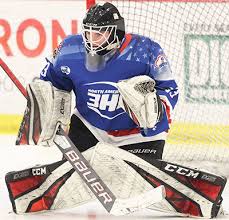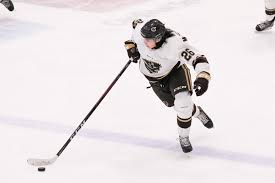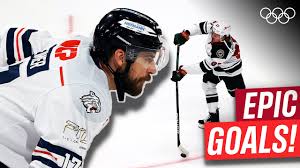Do NHL teams rest players for playoffs? While it’s no guarantee that they’ll secure home-ice throughout the playoffs, you should expect them to rest some of their players down the stretch, specifically Roberto Luongo.
Do NHL players shower between periods? Some players will take a shower during the intermission to feel revitalized for the upcoming period. Other players choose to meditate, closing their eyes, staying silent and visualizing their success for the remainder of the game.
Is Joe Thornton the oldest player in the NHL?
Zdeno Chara, Joe Thornton and Craig Anderson all entered this season in their 40s, with Chara being the oldest of the bunch at age 44.
Oldest players in the NHL this season.
| PLAYER |
TEAM |
AGE |
| Joe Thornton |
Florida Panthers |
42 |
| Craig Anderson |
Buffalo Sabres |
41 |
| Mike Smith |
Edmonton Oilers |
40 |
| Andy Greene |
New York Islanders |
39 |
Do hockey players rest before playoffs? When teams clinch postseason berths and are locked into their position in the standings, it isn’t unheard of for a team to rest their best players. Not only does this save those players from the risk of injury, but it also gives them a chance to breathe and let their body recover ahead of the NHL’s grueling postseason.
Do NHL teams rest players for playoffs? – Additional Questions
Do NHL players get their own hotel room?
Teams stay at the same hotel in each NHL city. Players and coaches are not allowed to enter each other’s rooms. There’s assigned seating at meals with tables spread out to ensure proper distancing.
Why do refs send players out of faceoffs?
An official may remove the player taking the face-off if the player or any players from the same team attempt to gain an unfair advantage during the face-off (called a face-off violation). When a player is removed, one of the teammates not originally taking the face-off is required to take the face-off.
How do playoffs work in hockey?
The top three teams in each division earn berths in the playoffs. The next two teams in terms of total points in the conference, regardless of division, earn the wild-card spots. This provides a total of eight teams from each conference. The top seed in each division plays one of the wild-card teams in its conference.
How long is break between hockey periods?
Play shall be resumed promptly following each intermission upon the expiration of fifteen minutes and thirty seconds (15:30) (or seventeen (17) minutes for nationally televised games) or a length of time designated by the League from the completion of play in the preceding period.
What is a maintenance day in hockey?
A lot of times teams will try to downplay the term “maintenance day” like a player is just taking a rest. And sometimes that’s actually true. But more often than not, it means a player has a nagging injury that needs attending to. Advertisement – Continue Reading Below. Usually it’s something minor.
How long is intermission before overtime in NHL Playoffs?
In the NHL playoffs, the overtime periods last 20 minutes if no goal is scored, so the ice needs to be resurfaced. This will result in an extra 15-minute intermission in NHL playoff games going to overtime.
What is the longest overtime game in NHL history?
1. Red Wings vs. Montreal Maroons: 176 minutes, 3 seconds (6 OTs)
- Date: March 24, 1936.
- Score: Red Wings 1, Maroons 0.
- OT winner: Mud Bruneteau.
- Round: Stanley Cup semifinal.
What is the highest scoring NHL hockey game ever?
Los Angeles Kings at Edmonton Oilers – 16.
Can a hockey game end in a tie?
At the NHL level of hockey, a game cannot end in a tie. If the game is tied at the end of regulation time, the teams will play a 5 minute overtime, and if no goal is scored the game will be decided by a shootout. However, in the NCAA and recreational levels games can end in a tie.
Can a hockey game End 0 0?
In the NHL, there have been 41 games tied 0-0 after overtime since the introduction of the shootout in 2005 (meaning they would have been recorded as a 0-0 tie in the past), which is 0.25% of games. And there have been 189 0-0 ties in history (dating back to 1924) [games are double-counted in link].
What happens if nobody scores in overtime hockey?
If nobody scores in the overtime period, the teams engage in a “penalty shootout” where three skaters, selected by the head coaches on the teams, go one-on-one against the opposing goaltender, taking the puck at center ice for a “penalty shot.”
Who shoots first in NHL shootout?
The visiting Team will shoot first. The teams shall alternate shots. (NOTE 2) Three (3) players from each team shall participate in the shootout and they shall proceed in such order as the Coach selects.
What are 4 goals in hockey called?
Scoring four goals in a hockey game is much less common than a hat trick. If a player scores four goals in a single game, it is sometimes referred to as a “Texas hat trick.” This term is less commonly used than a hat trick, and its origins are uncertain.
Can anyone on the ice take a penalty shot?
When the foul was committed on a specific player—as on a breakaway—that player must take the penalty shot. However, in the case of goal-crease infractions or net dislodging, the captain of the non-offending team can choose any player who is already on the ice to take the penalty.
Do both goalies get a shutout in a shootout?
While both the goalie and the team will earn a loss in the OT (overtime/shootout loss) column, the goalie will be awarded with the shutout. Furthermore, the opposing goalie will have also earned the shutout on top of the win.
Are there clean sheets in hockey?
In team sports, a shutout (a clean sheet in association football) means that one team in a game prevented the other from scoring. They often happen in ice hockey and association foot, sometimes in baseball and American football, rarely in rugby, and although it is possible, it almost never occurs in basketball.
Can you change goalies for a shootout hockey?
Goalie Replacement in Shootout
While a team may replace its goalie at any point in regulation time or overtime, once a goalie starts playing in a shootout, he may not be replaced in the shootout. If a goalie gives up a so-called “bad” goal, the coach may not replace the goalie and put in a substitute.



